The Emerald Ash Borer is a narrow, elongated beetle that is 8.5–14 mm long, and 3.1 –3.5 mm wide. Adults have a metallic-green back and bright-emerald belly. Their head is flat with black or bronze kidney-shaped eyes. Adults are present from June through August. Their small oval eggs turn from cream to brown with age. White larvae grow up to 30 mm in length, and chew characteristic serpentine galleries in the living tissues of Ash (Fraxinus spp.) trees. They create D-shaped holes in the bark, causing symptoms that range from foliage thinning and premature yellowing, to tree death.
Emerald Ash Borer is a highly destructive pest to our native Ash trees, including the threatened Black Ash (Fraxinus nigra) as well as our urban forests. Adults damage the foliage by grazing. Larva hatch from eggs laid in bark crevices, burrowing into and feeding on the living tissue of hosts trees. Infested trees die within 1–4 years, and more than 99% of Ash trees in a stand can be killed within ten years when not managed. Loss of Ash trees causes negative ecological impacts, affects herbivores that depend on Ash species, and also affects the cultural use of Black Ash in traditional Mi’kmaq practices.
Emerald Ash Borer was first observed in Canada in 2002, and in the Maritimes in 2018. It was most likely first introduced in wooden pallets from China, then spread within Canada on firewood being transported between regions.
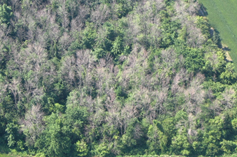
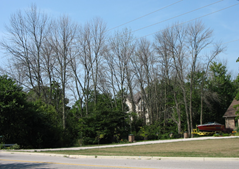
Green metallic beetle; winding galleries in trees; D-shaped exit holes in trees.
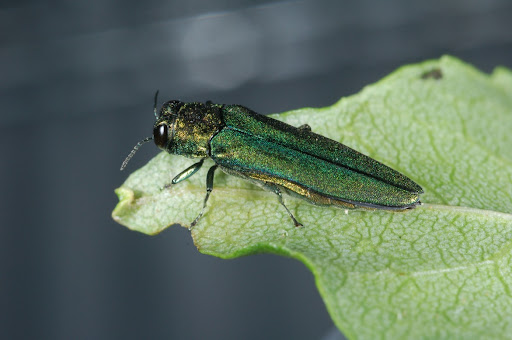
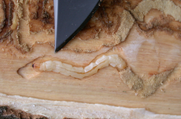
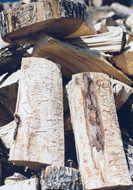
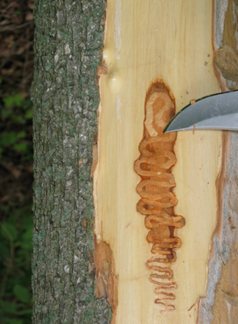
The Emerald Ash Borer is capable of surviving temperatures as low as -50 °C.
.
Emerald Ash Borer is capable of short-range flight, but longer-range spread is mostly attributed to human activities. Avoid moving Ash logs and firewood. Know the applicable regulations for your area. When in doubt contact your local CFIA office at inspection.canada.ca. If you spot this invasive species, report the location to iNaturalist, or directly to the NSISC.
Join our mailing list.